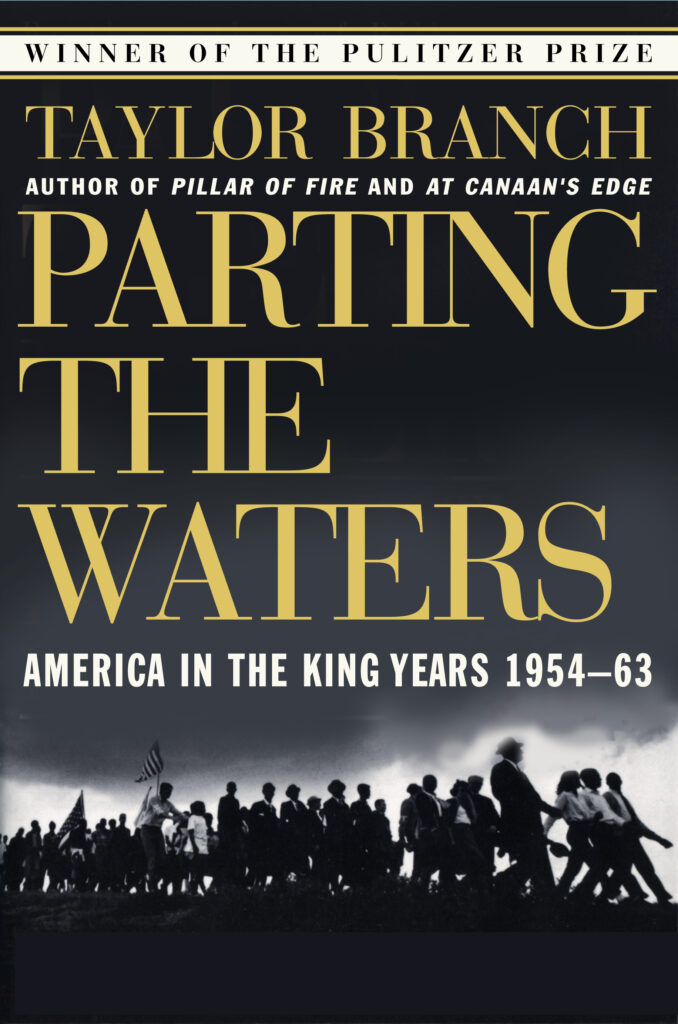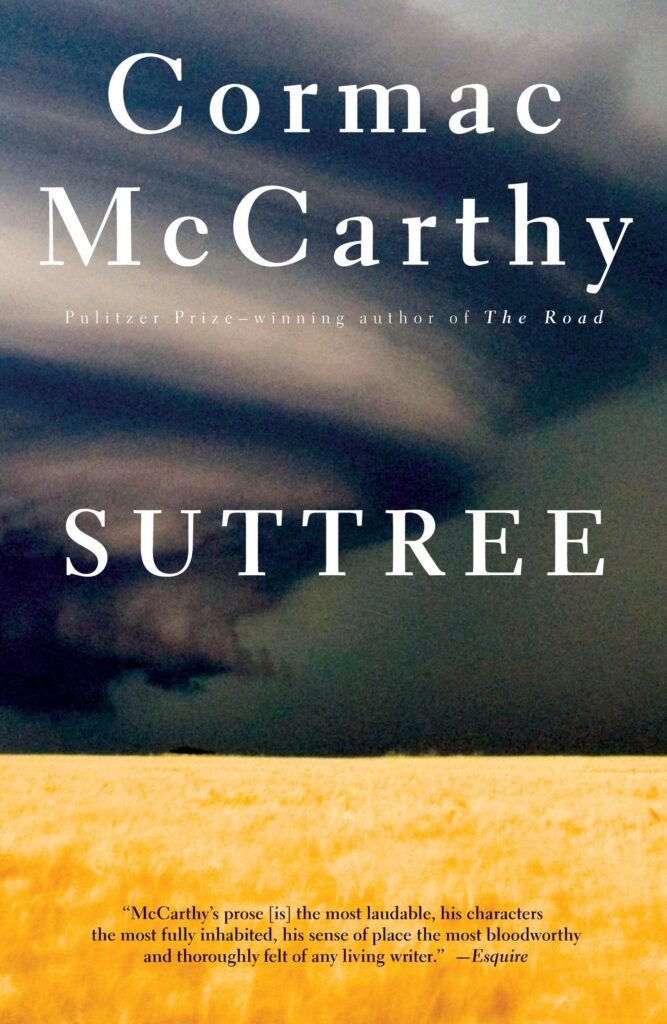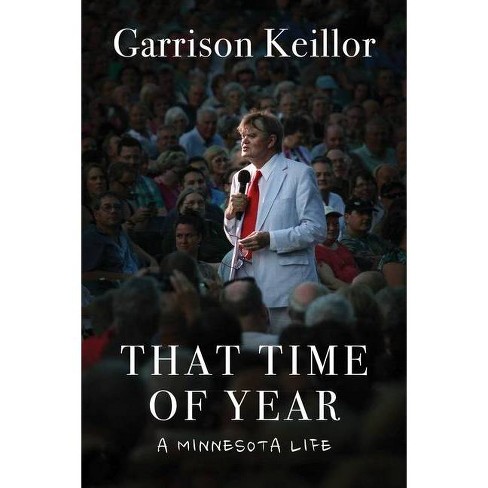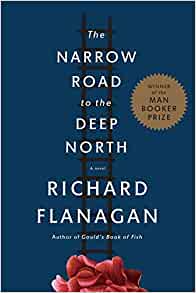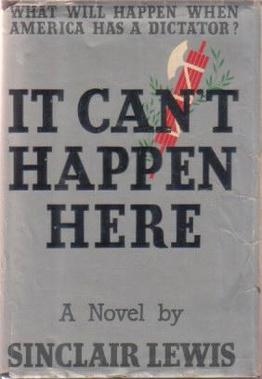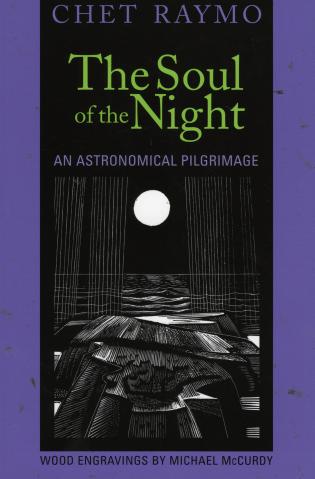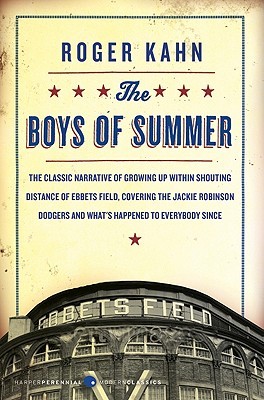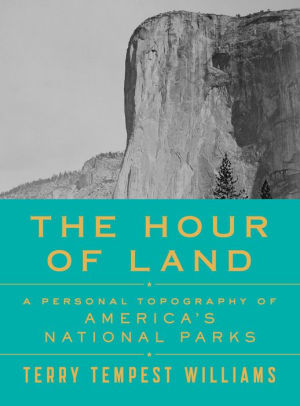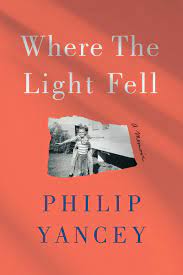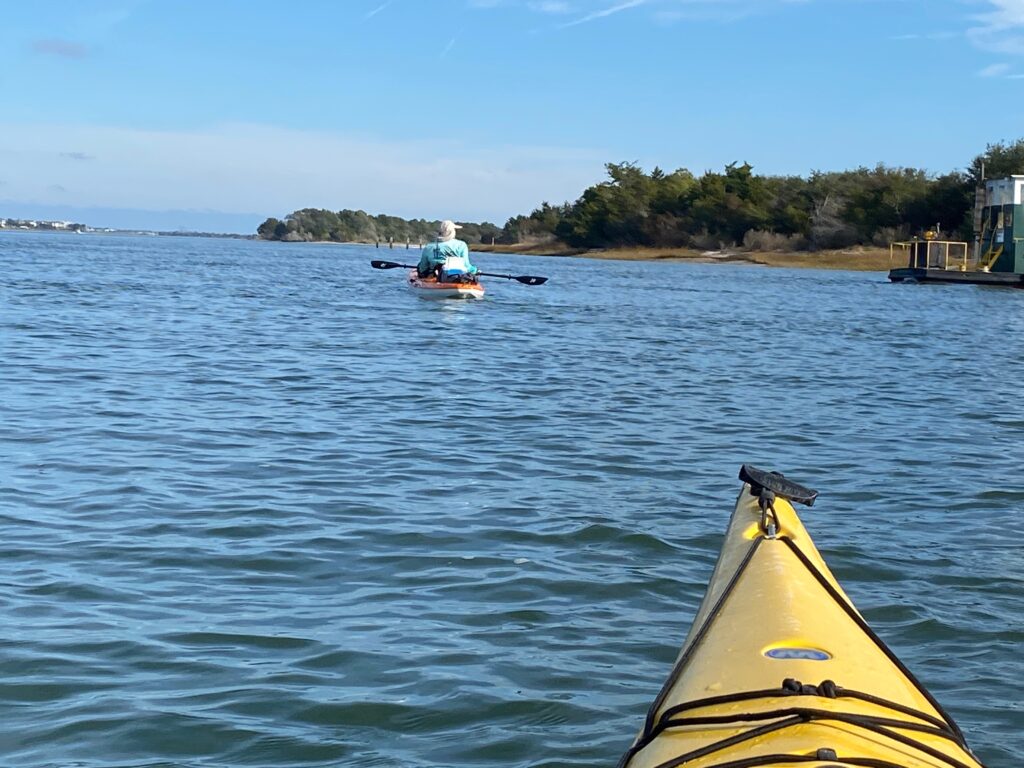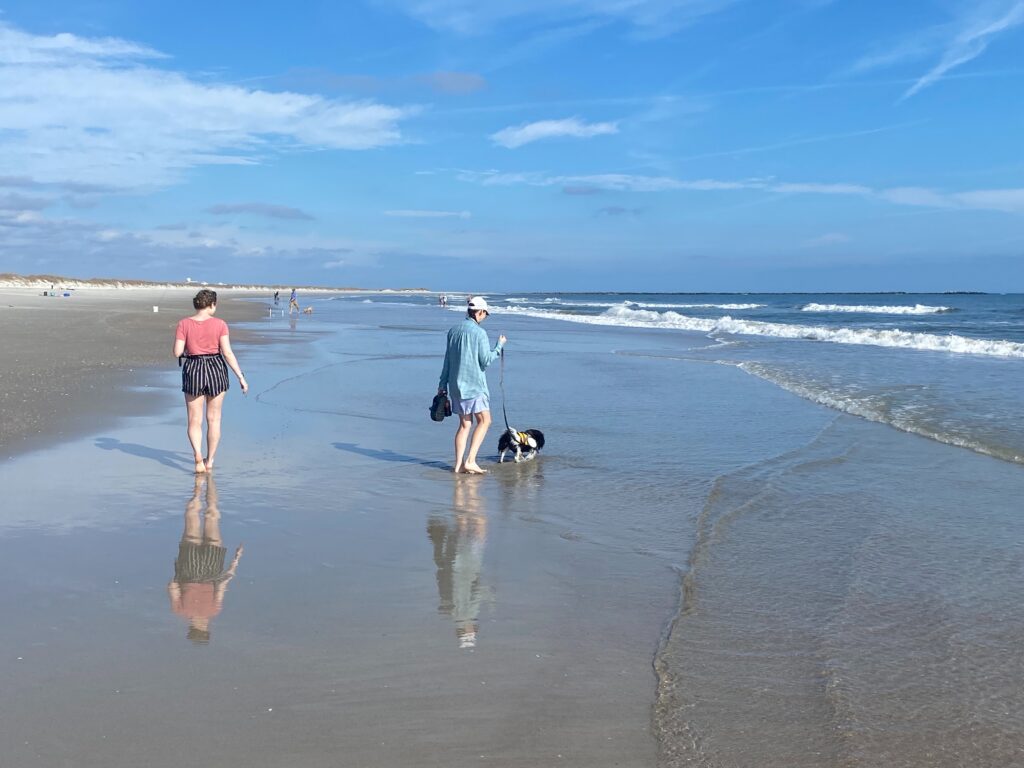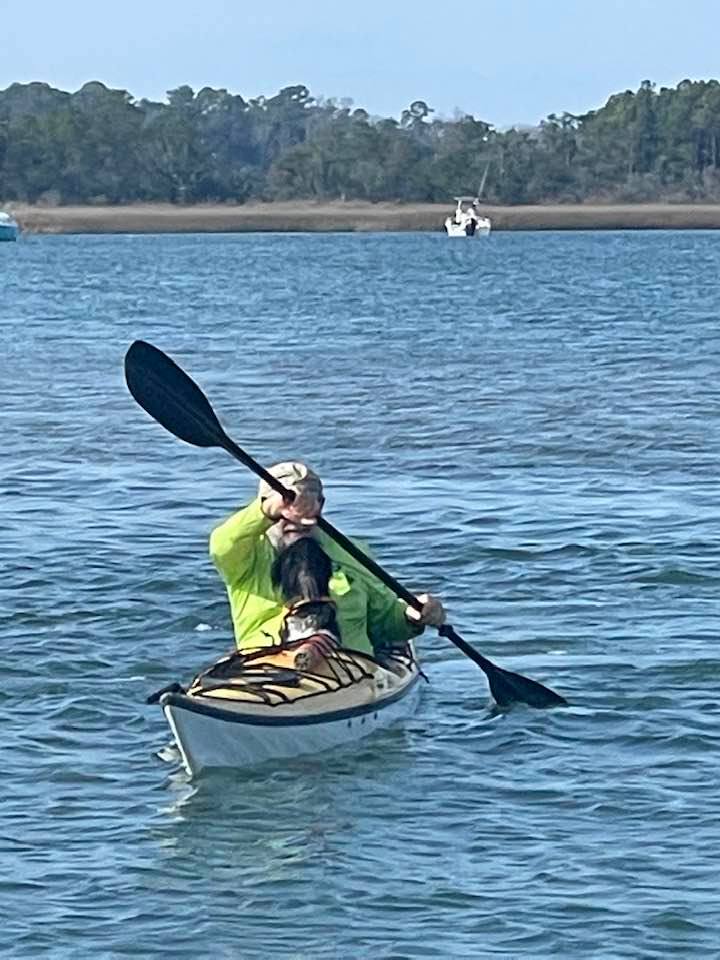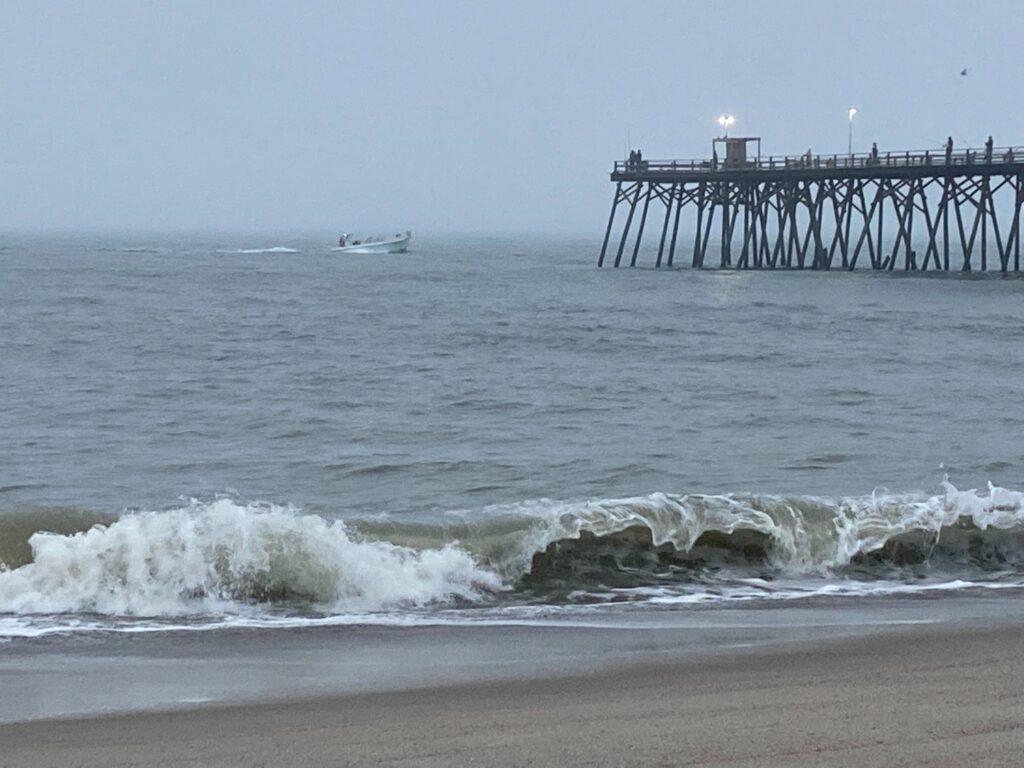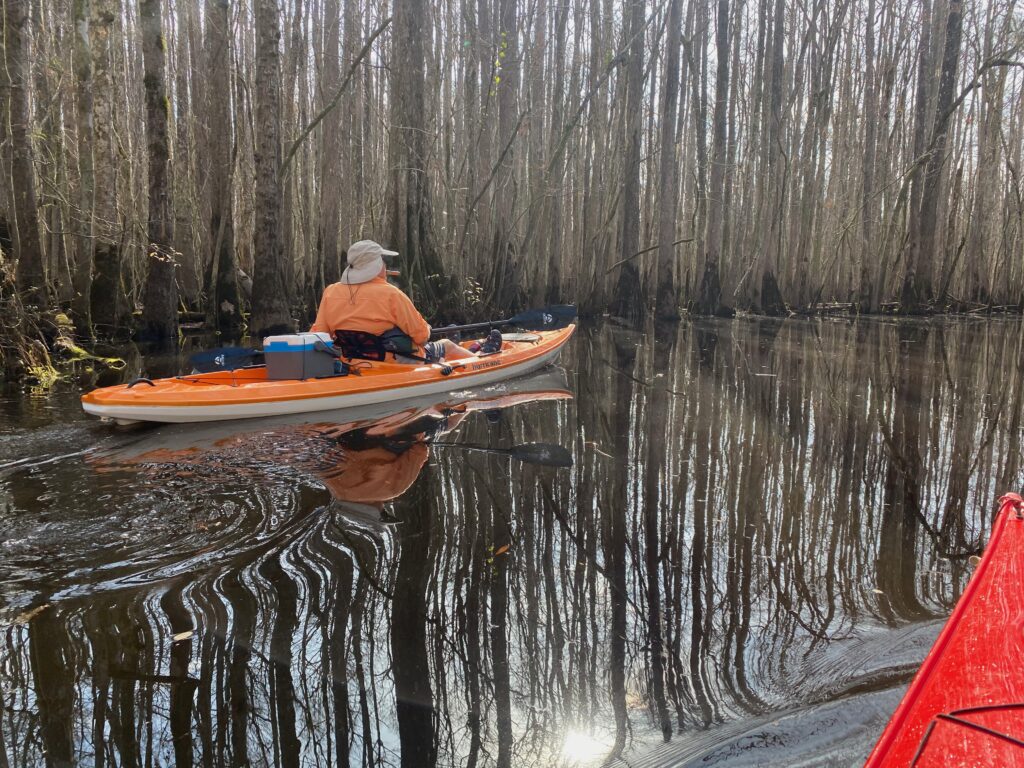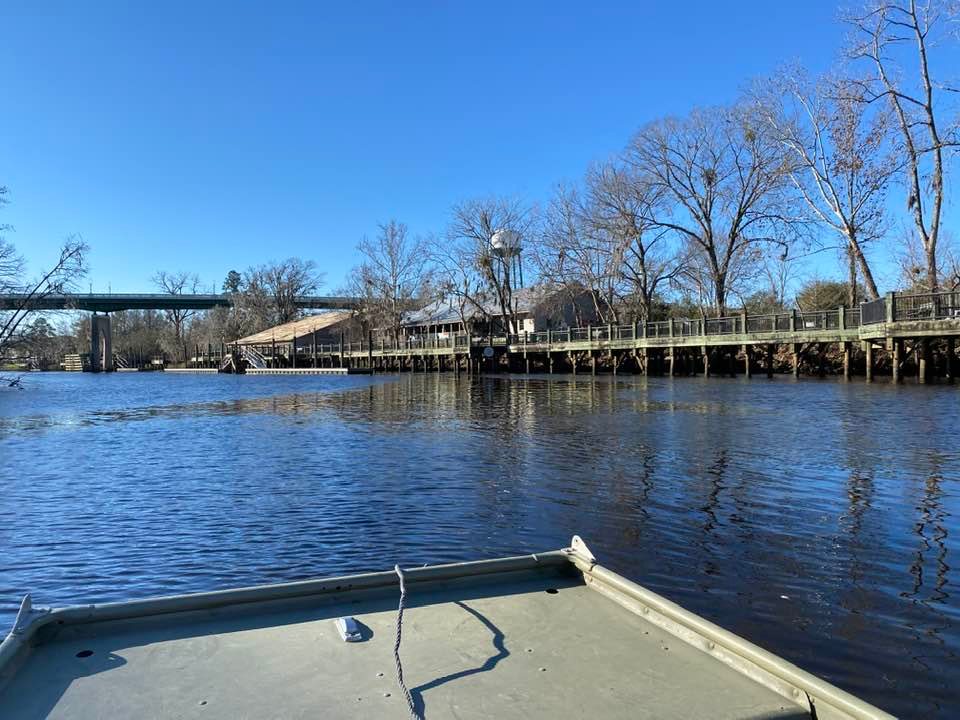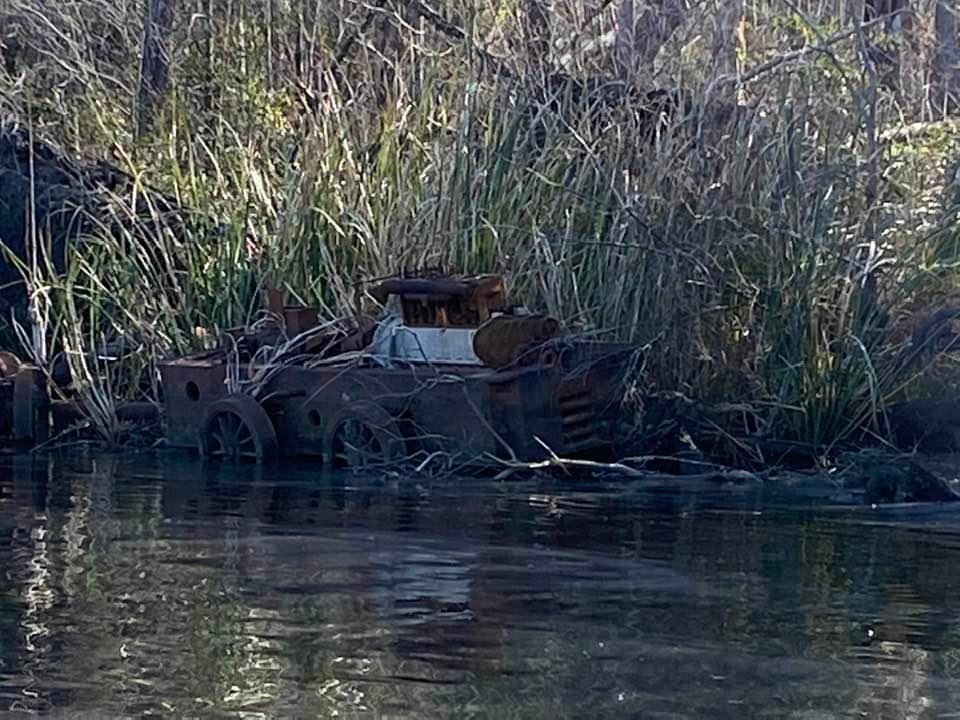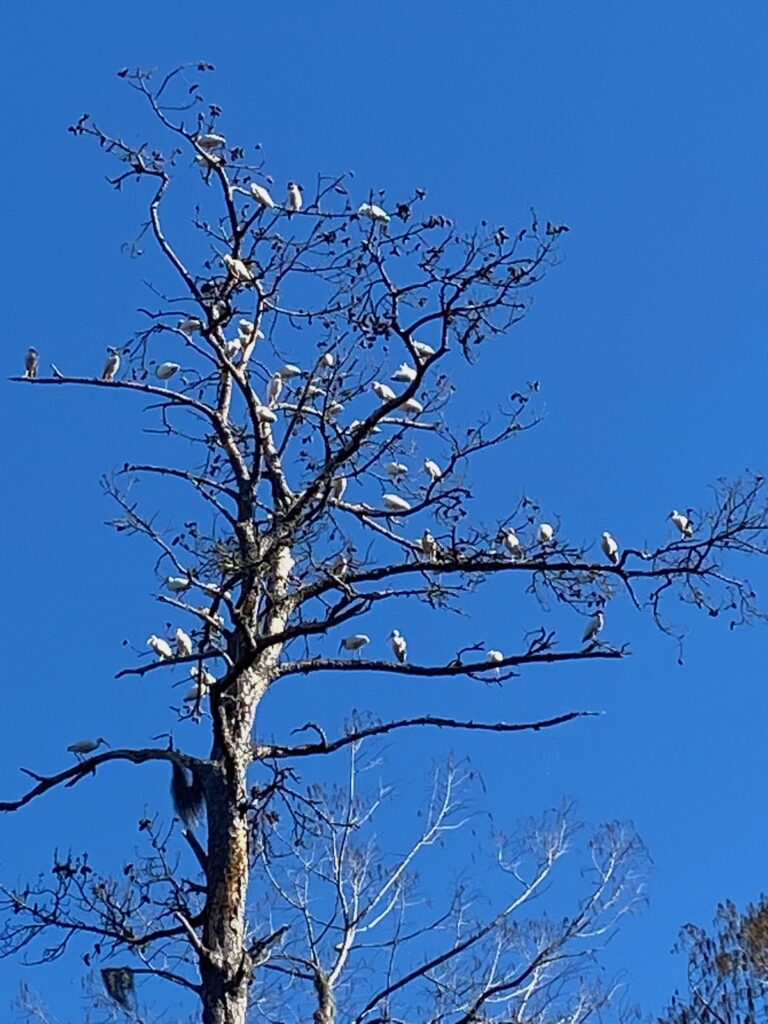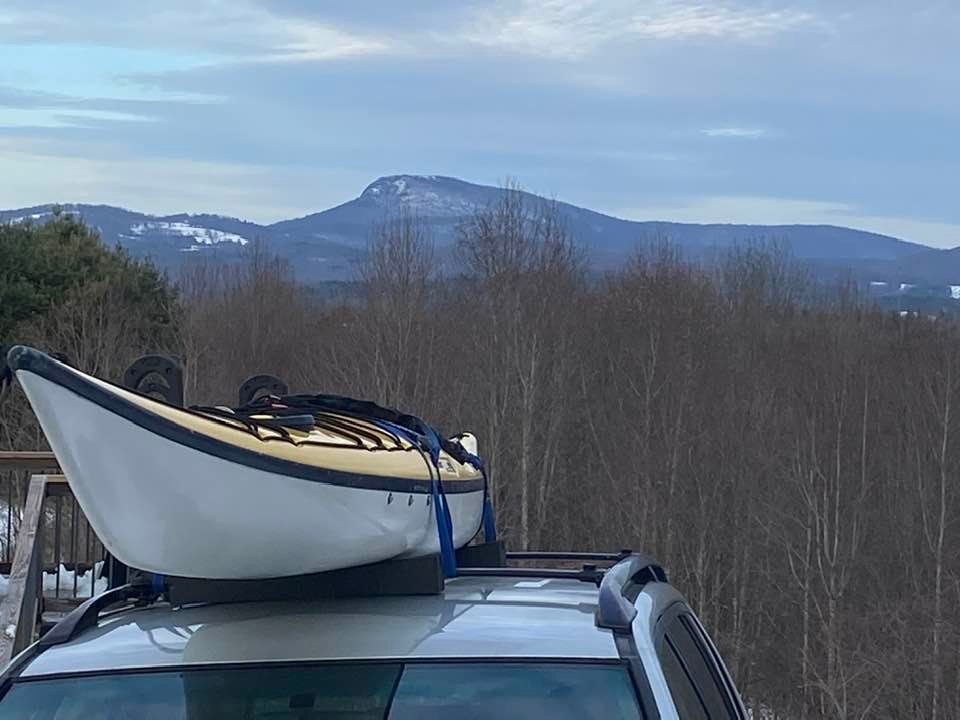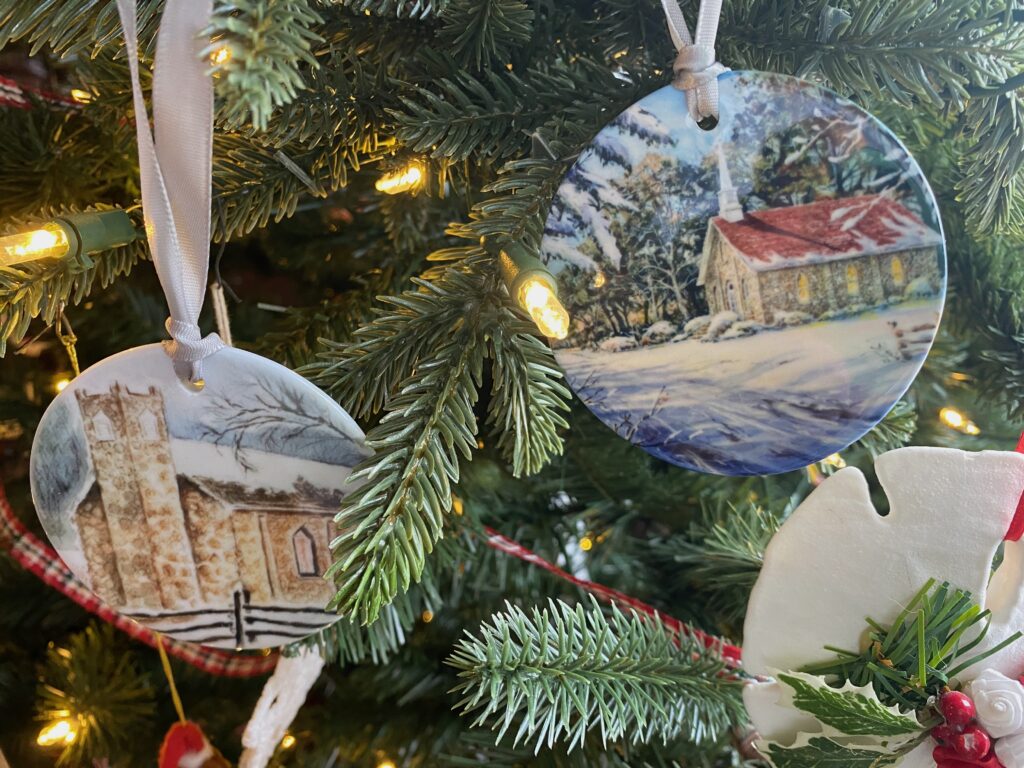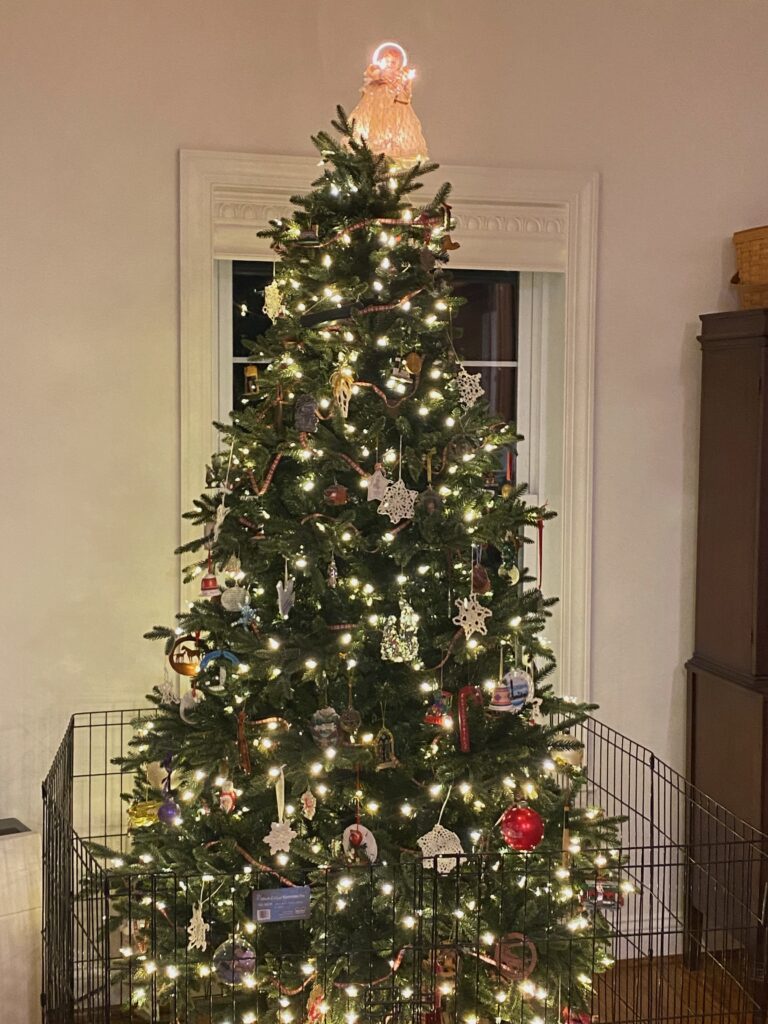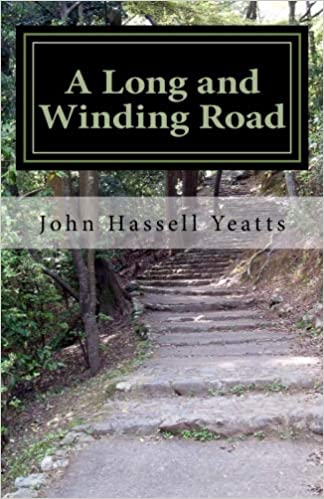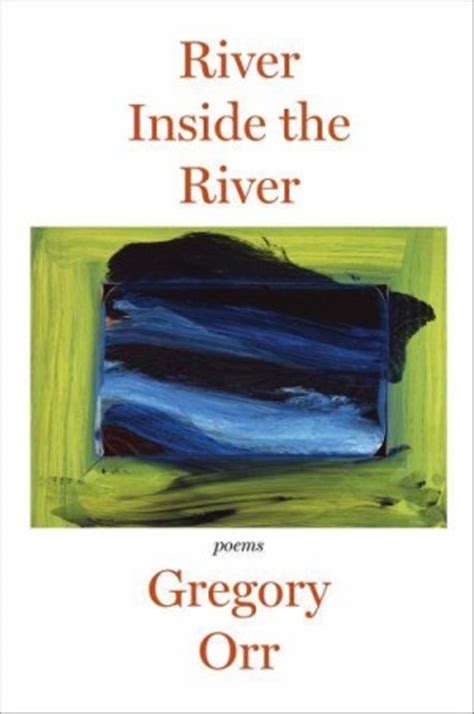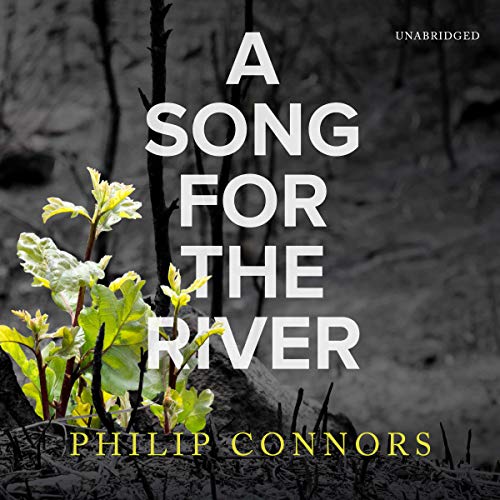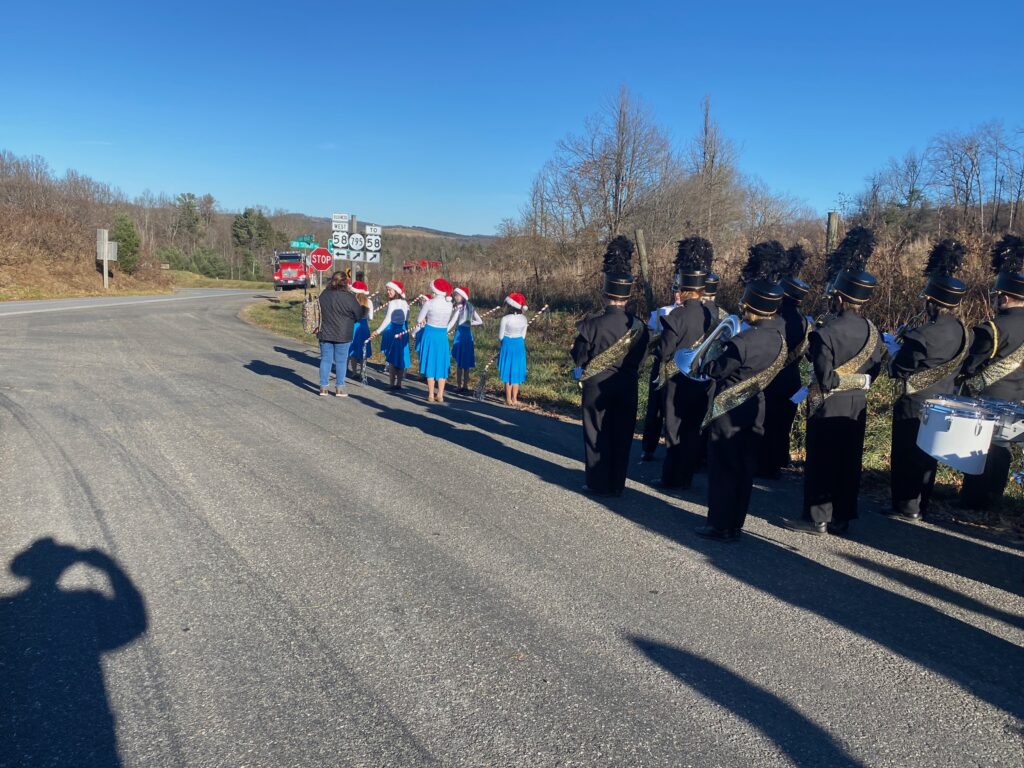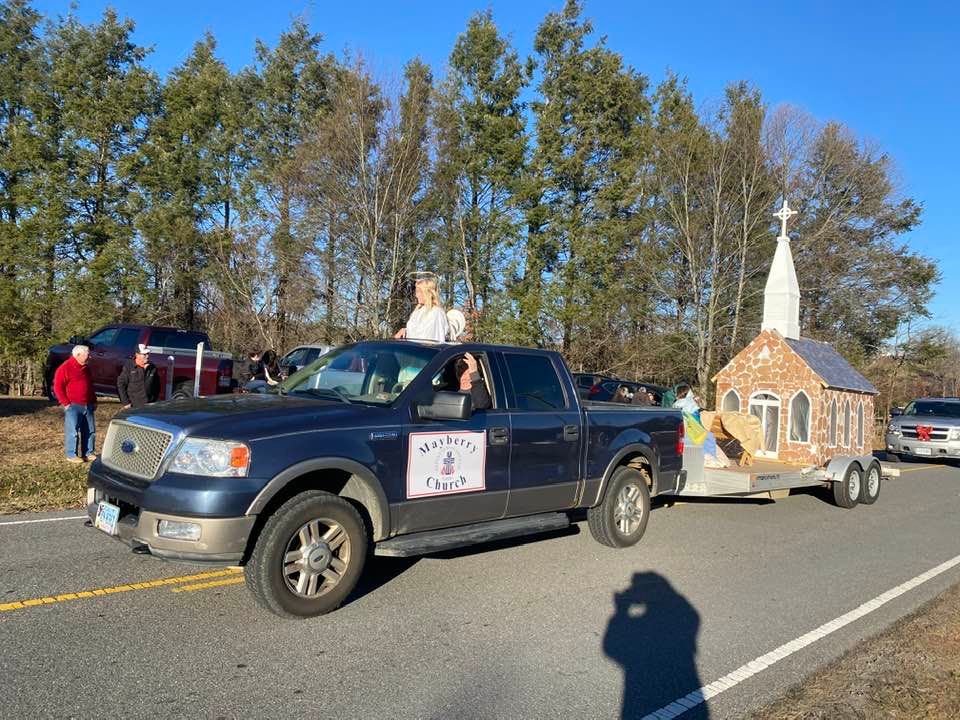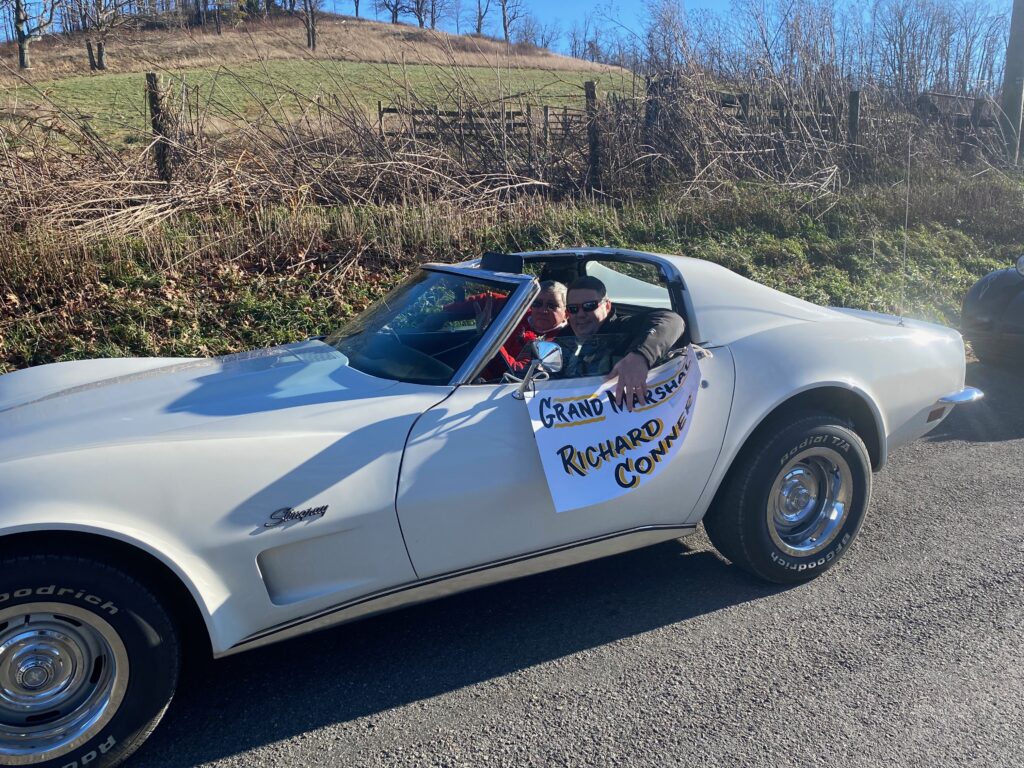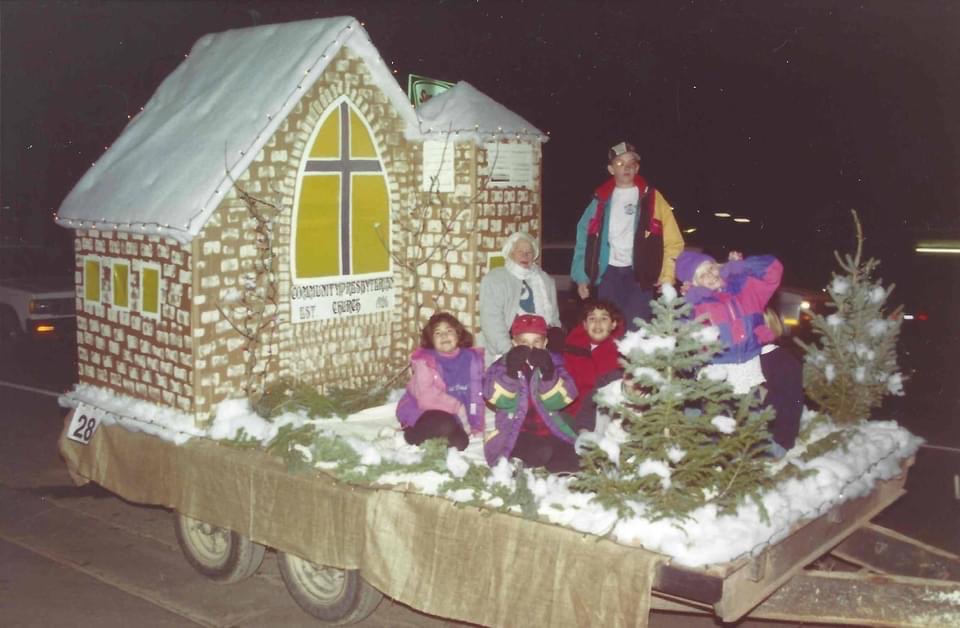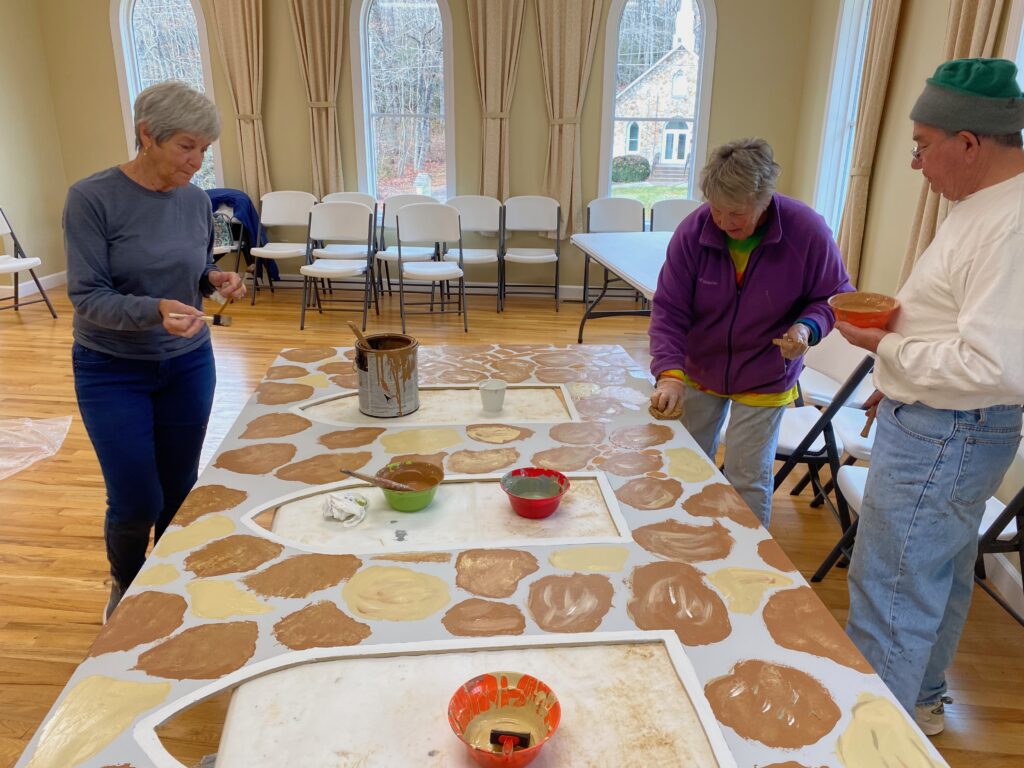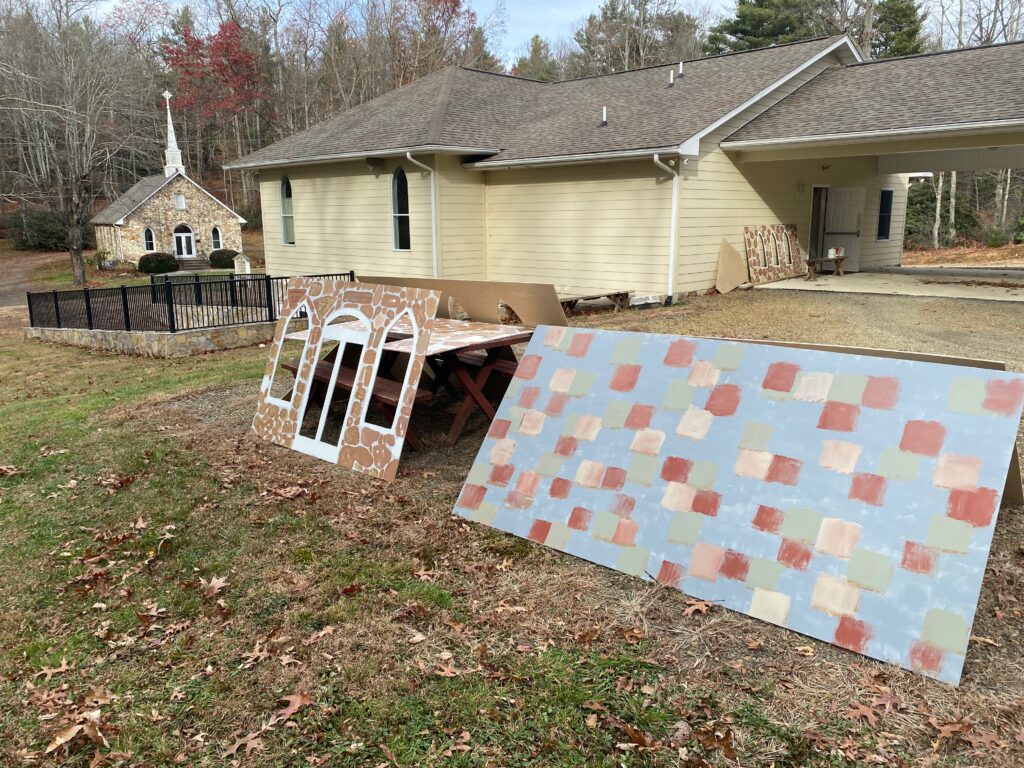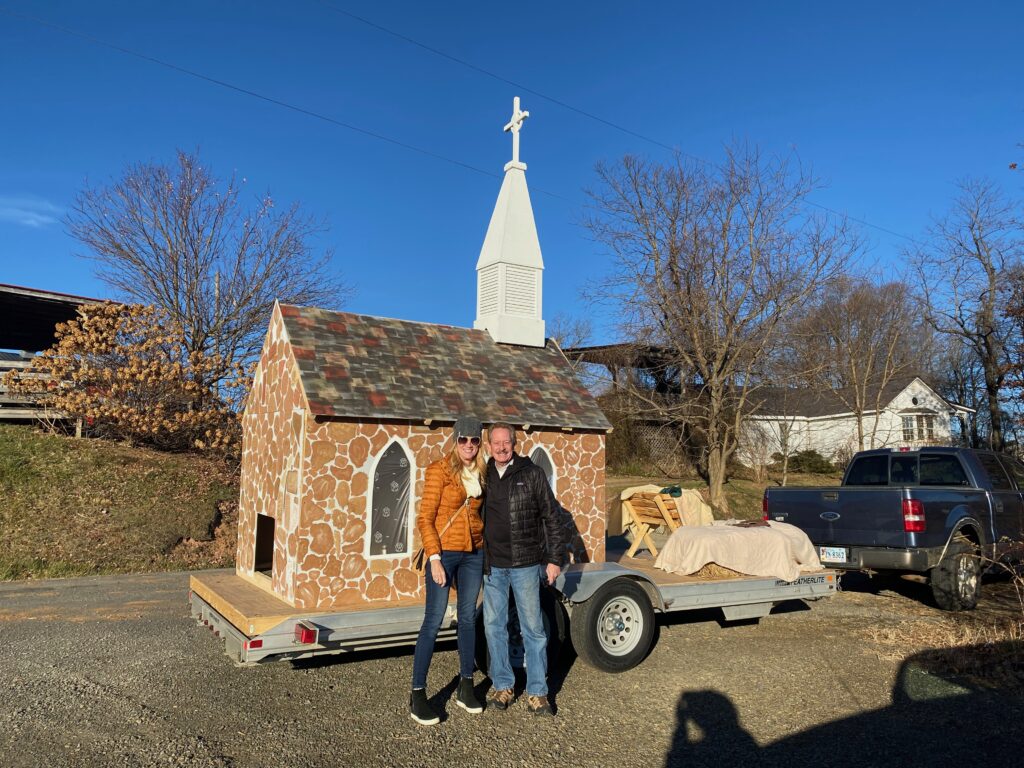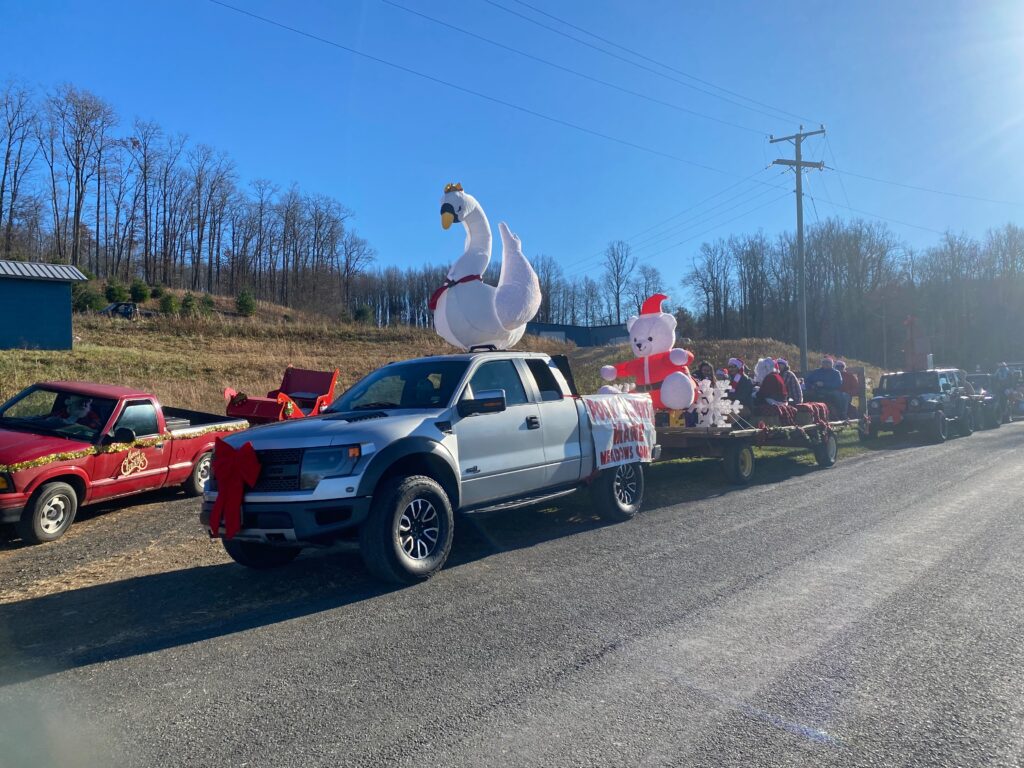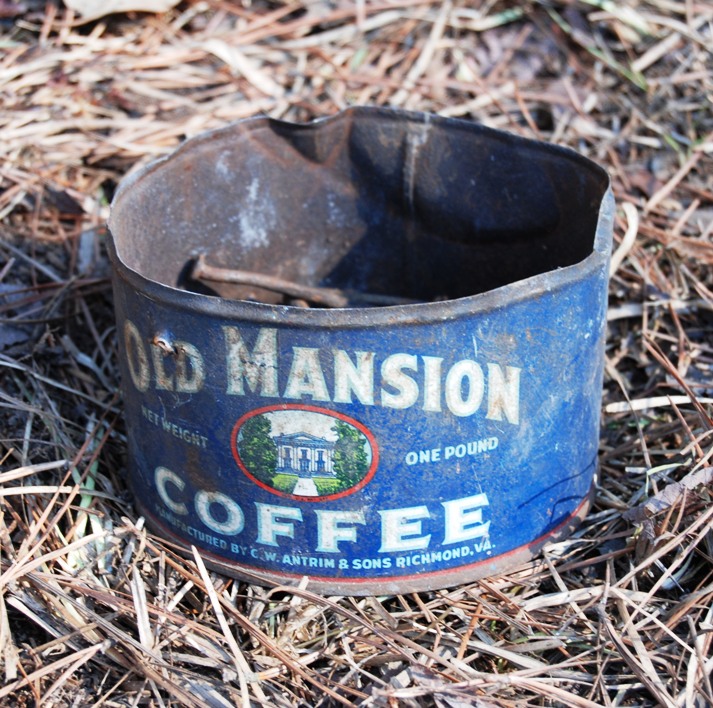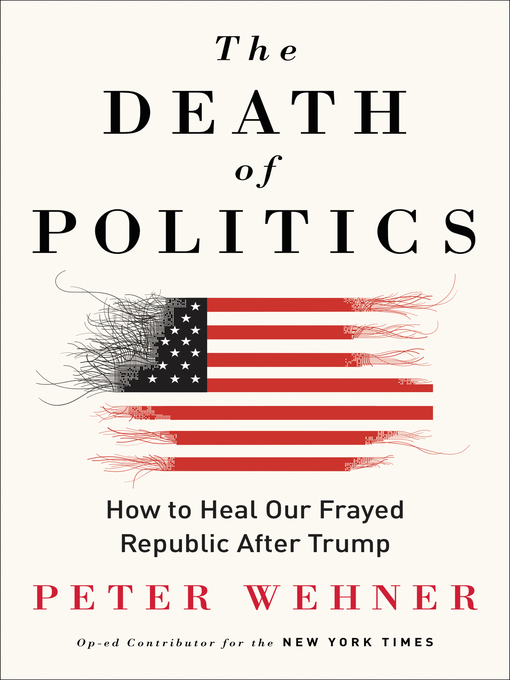A Bittersweet Trip back to Skidaway
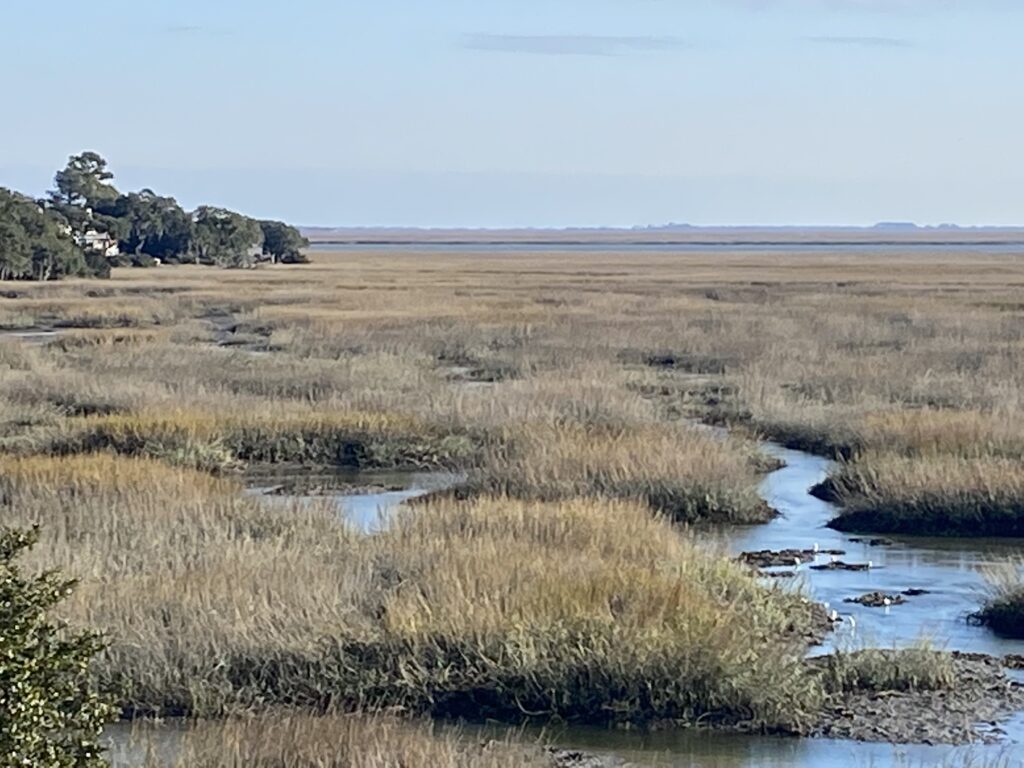
I spent Saturday morning walking around the north end of Skidaway Island. It is hard to imagine I spent six and a half years here. My walk was a sad one as I recalled two friends from the island who are no longer with us. I had come back at the request of Anna Fay Lohn to talk at her husband, Andy’s, funeral. And last Thursday, as I sat down to write the homily for Andy’s service, I received a text from a friend informing me of the death of another friend, Todd Williams. Andy died of Leukemia, Todd of colon cancer. While I had known of Andy’s illness and talked to him a week before his death, I was unaware of Todd’s illness. I learned from friends that only a few knew he had cancer and only a few knew how sick he was. In this post, I’m going to say something about each.
\
Todd Williams
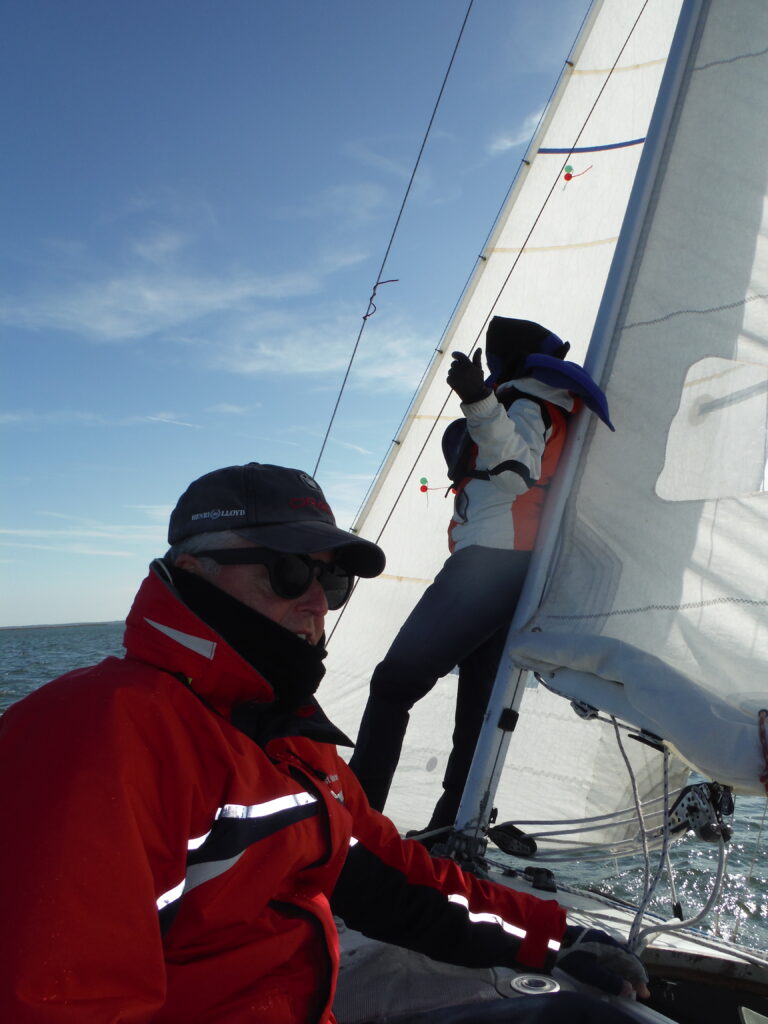
Todd was an incredible sailor and our relationship mostly centered around sailboats and the Landings Sail Club. On the porch of the clubhouse, he was one of the most laidback guys. But put him at the tiller of a boat in a race and everything became very intense. He liked to win! He always pushed his crew hard and often there would be heated exchanges between him and the other boats around him. He knew the rules of the water well, but I have also seen him admit when he was wrong. I learned a lot from sailing with him and from competing against him. It was also on his boat that I ruptured my quad tendon in January 2016, when I slipped, with my foot pinned against a block, keeping my leg from bending as I fell backwards. Todd constantly called to check on me as I recovered from surgery.

What was probably the last race we competed against each other (the 2020 Hook Race from Hilton Head to the Landings Harbor), Todd’s boat just barely beat us around the sea buoy at the channel marker. With a lack of wind, they’d moved the finish line out into the ocean, cutting out the last 6 or so miles, so we’d be done before dark. About an hour before the end, the wind freshen up. Todd had stayed closed to land and we were further out into the sea, each trying to gain an advantage. When we came to the marker, Todd’s tack was better, as he charged out toward the buoy. He just beat us, but then had to laugh about it as our boat had a much higher handicap than his C&C 33. When the handicap was taken into account, we won, but he still wanted to be first and his boat skills allowed him to take advantage of that last puff of wind. As the light faded, so did the wind, and the two boats motored up the Wilmington River next to each other.
I talked to Todd when I was in Savannah in October. He had planned to sail with me and a group of others but called to say he wasn’t feeling good. I had no idea he was so sick. We’d also texted back and forth in July when he was sailing the Chicago to Mackinaw race. I was on a friend’s boat in Grand Traverse Bay. We explored meeting on his sail back to Chicago, but wasn’t able to make it happen.
Todd worked in risk assessment and often traveling to Europe and Asia. He loved the finest things in life, especially food and wine. He arranged the weekend regattas for the Landing Sail Club to almost the end. He is going to be missed on the island and in the sailing world. On Saturday night, I gathered with members of the club for a bon fire to remember todd.
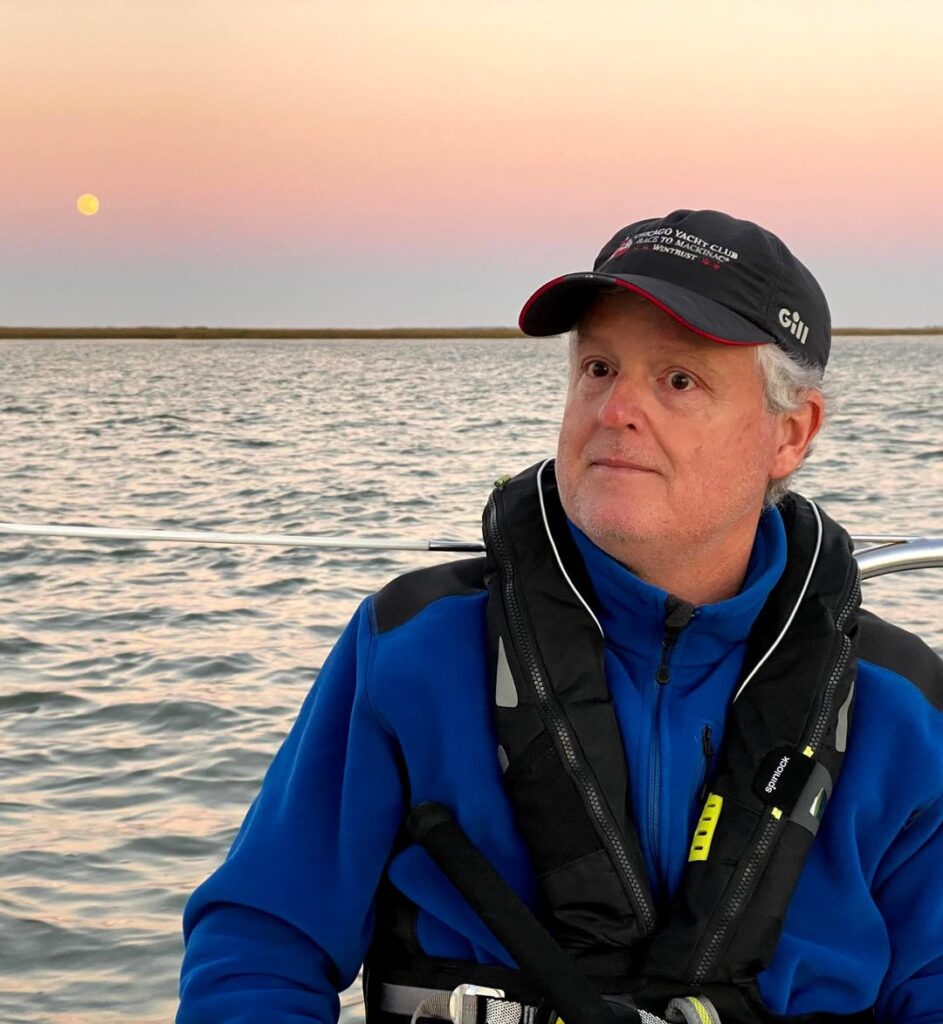
Todd on a moonlight sail, last year.
Andy Lohn
Andy Lohn was one of my best friends on the island (and there are many others who also felt Andy was their best friend, he was that kind of guy). Below is the homily I used for his service. One thing I left out, but was important and didn’t seem appropriate in a homily, was our Friday afternoon/evening “board meetings.” A group of six to eight of us would gather most Fridays for drinks and munchies and to solve the world’s problems! Lots of good conversation were held while nursing a glass of bourbon or scotch. Sadly, I never took any photos of the board meetings (probably because no one wanted the evidence). Here’s my homily:
Andy Lohn Memorial Service Homily
Skidaway Community Church
John 14:1-6, 16:
January 29, 2022
At times like this, it’s not only natural to remember, but healthy. It’s what the Apostle John did as he penned the words I’ve just read. He recalls the most memorable night of his life. John devotes almost a quarter of his gospel to this evening which Jesus and the disciples are together one last time as a family. Jesus didn’t want his disciples to be fearful or worried. He wants them to know that death is not the end, not his death, not ours, not Andy’s.
I have a hope that when I see Andy again, he’ll be wearing his fire department apron, with Lohn on the butt tag, and standing over a grill. I’m sure he has already volunteered to serve as the master griller for Jesus’ promised banquet in the new kingdom.
I met Andy through a phone call. He was on the Pastor Nominating Committee at Skidaway Presbyterian and called to see if I was interested in the position. At the time, I had two other church offers on my platter. I planned to accept one of them. I told him this up front. But we continued to talk for a good thirty minutes. We discussed the church, our faith, our families, our interest in the outdoors, and our love for the American West. It was a good conversation. I felt as if we had known each other a lifetime. As we said goodbye, he told me to let them know if I change my mind about those other churches. Obviously, I called back.
Andy was that type of guy. He never met anyone who was a stranger. If they were a stranger, it wasn’t for long. He had the ability to make those around him feel at ease. And he inspired others. As one friend of Andy’s said, “just being around him, seeing how he interacted with others, made me want to become a better version of myself.”
To meet Andy, you’d soon find yourself in a meaningful conversation. And he would often, at such time, share his faith. Not in an obnoxious, heavy-handed way, but in a natural, non-threatening manner. Charles Robeson, pastor at Kingdom Life Christian Fellowship, told me he met Andy as an attorney for a real estate deal, but soon they became brothers in Christ.
I met Charles through Andy. He brought the three of us together to pray over the racial divide in Savannah. As Charles shared with me this week, two things stuck out about Andy: his faith in Christ and his desire to see the community unite beyond racial barriers.
One of the things most of us appreciated about Andy was his subtle humor. Often, his humor was self-effacing. While Andy would wear suits, he was more comfortable in shorts and flipflops or loafers without socks. Once, after work, when he was comfortably dressed, he introduced Rory, one of his colleagues at the firm, to a group of us. Rory was still decked out in a suit; I think he may have loosened his tie. Pointing to his suit, Andy introduced him as a “real lawyer.” In a way, his humor was one of the ways he made everyone feel comfortable around him.
Most everyone who hung around with Andy knew of his love to eat, often at dives. Whether it was, as one friend remembers, driving back from a dove hunt and stopping for a late breakfast in a greasy spoon. Or, as another remembers from another trip, stopping at a Mexican restaurant that was stuck behind a store that sold everything from food to cell phones. He and I often meet for lunch at Indian and Vietnamese restaurants. And Andy was also an excellent cook.
Andy strove to bring communities together. Whether it was communities of race, or different countries, or just people from different walks of life, he did what he could to gather people together in the hopes that bridges would be built. He worked hard for Rotary, serving as President and District Governor. He took an active interest in the exchange program, sponsoring a student from Germany, but also supporting others from Sri Lanka and Africa. He even spent several weeks one summer in Germany as a Rotary ambassador. As Paul Meyer, his colleague in law noted, “Andy embodied the Rotary ethos of ‘Service Above Self.’”
Andy’s work in the community extended beyond trying to build bridges. He was also about putting out fires, metaphorically as well as literally. Andy and I joined the fire department at the same time. We went through training together. Whether crawling through a maze or learning to fetch an unresponsive person down a ladder from two stories up, Andy was ready to raring and ready to go. Unfortunately, with hip issues, he had to step back from being an active firefighter, but he continued helping the Skidaway division as its treasurer until he became ill.
Andy enjoyed being an attorney. His approach with his career was to use the law to do what is right. As his friend and client, Mark Hornsby, told me, “Andy served as my guard rail for getting through business problems.”
Not only did Andy influence our community in a positive manner, but he also made connections through his work which allowed him to share his faith in Jesus Christ. Paul Meyer, who had the task of cleaning out his office, shared with me a thank you letter Andy received from a client he helped navigate his wife’s illness. The letter ended:
“God has often sent me someone I call, “Jesus with skin on.” You (Andy) fit that bill.
Thank you for your care and concern.”
Andy: “Jesus with skin on.” If we all could be so gracious.
One of the paralegals at his firm recalls how Andy would take time to explain the intricacies of the law. Andy worked to end. She continued to talk to him in the hospital several times a week. She imagined him hooked up to tubes and in pain, but he never complained.
Andy liked being outdoors. Perhaps this came from him growing up in Western Colorado, where he gained “farm skills” and enjoyed the freedom of the outdoors. He enjoyed fishing and bird hunting and was a member of the Forest City Gun Club. A couple of years ago, he purchased a kayak. I was hoping to paddle with him, but he had his hip issues and then I moved. I am glad, though, that after I left, he was able to paddle several times with another friend, Aaron Bibby.
With all the good Andy strove to do in our community, he was basically a family man. He and Anna Fay created a loving home, where everyone felt welcome.
Friends of his and Anna Fay introduced the two of them. They were married for 31 years. Andy was so excited when they were expecting Katherine, their first child, that several weeks before her due date, he put the car seat on a counter in the kitchen, with a buckled in Teddy Bear. He was ready to go! When she began her studies at Georgia Tech, Andy proudly put a “Georgia Tech Dad” sticker on his truck. He loved both of his daughters. He was a proud of Caroline’s accomplishments on the tennis court and excited as her faith in Jesus grew.
He was also proud of his family. While Andy never served in the military, he honored those who did. If you were in his home, I’m sure he told you about his father, a Navy hardhat diver at the end of World War II, or showed you the metals and honors his father-in-law (a colonel in the Army) had earned. He was proud of other family members who served their country including Colonel David Howell, Captain John Tilley, and Sergeant Ken Midcalf (all who are here today).
Finally, Andy’s faith in his Savior Jesus Christ was solid. He knew the Bible and could draw on its wisdom. He often spoke of how good it felt to study the Scriptures. Others, as we’ve already seen, saw his faith through his life. His brother-in-law Fen commented on his strong faith, saying, “we all should be so blessed.”
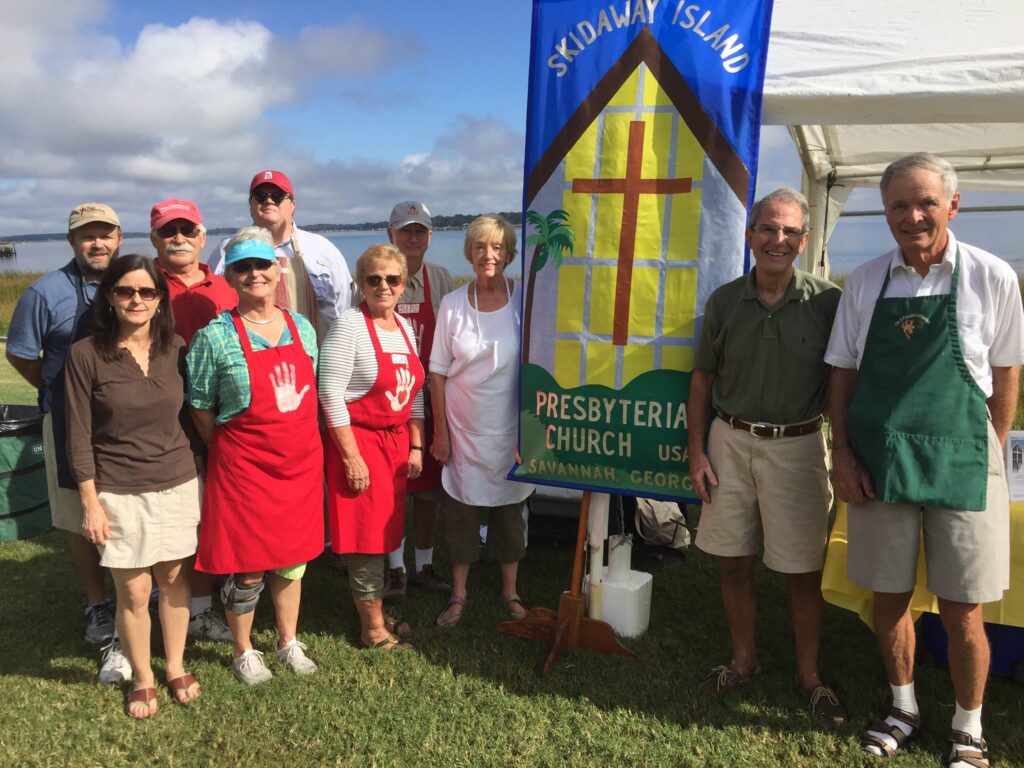
Andy worked hard here at Skidaway Community Church, serving as an Elder and a member of the Pastor Nominating Committee. I will always be grateful for the one Saturday, in which my father was in the hospital in North Carolina. I stopped in to see my dad on my way out of town, as I had to preach here on Sunday. But things weren’t looking good. Suddenly, a team of doctors came in and decided immediate surgery was necessary. I called Andy. I told him my sermon was prepared and asked if he could he preach it for me so I could stay where I was needed. He graciously accepted. If there was anything Andy could do for you, he would.
Andy’s faith must have played a role in his optimism. He knew he was in God’s hands. He told those at Meyer and Sayers Law, after he was diagnosed with leukemia, that he could have two perspectives. “I can either look down in the mud or look up in the stars. I prefer to look up and see the stars.” As his friend, Sam Eskew, said toward the end of Andy’s life, “You can tell he doesn’t feel well, but he won’t say that. He’s always throwing roses.”
Andy is no longer with us, but he has gone to that home his Savior has been preparing for him.
In our gospel reading, we see how Jesus knew on that night of his betrayal what his disciples would be feeling once he left. He shared their apprehension over his leaving, but Jesus also understood he was called for a greater purpose. He comforts his friends by assuring them there are going to be many dwelling places where he’s going, enough for all of them to join him.
It’s comforting to realize the potential of this promise. Jesus prepares a place for us; he expects us to join him. We can be assured that he has welcomed Andy home, for Andy’s true home was not here on Skidaway Island or in Atlanta or Colorado. Like us, Andy was a pilgrim on earth. He journeyed here for sixty-one years of preparation for his new life with Jesus.
“I am the way, and the truth, and the life, no one comes to the Father except through me.” This one sentence ties together Jesus’ entire ministry. This is good news for those of us who belong to a race of people who have lost their way.
Salvation is not our doing. It is a gift of God made possible through the saving work of Jesus Christ who gave his life for the life of the world. Jesus’ words in this passage are not only directed at the disciples. The eleven who remained somewhat faithful are not the only ones who are promised rooms in that heavenly mansion. Because he is the Way and the Truth and the Life, because he died for the life of the world, Jesus’ words apply to us, too.
Jesus’ words provide hope for a better world; a world prepared for Andy, for us, and for all followers of Jesus. Salvation is found in him and him alone. Yet, even with this hope, our pain remains as we remember Andy: a loving husband, a devoted father, and a loyal and optimistic friend. As John recalls Jesus’ words, “You will have pain now; but I will see you again and your hearts will rejoice.” Amen.

Taken on my walk around Skidaway on Saturday

